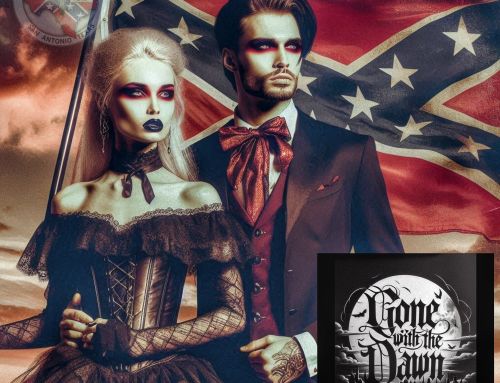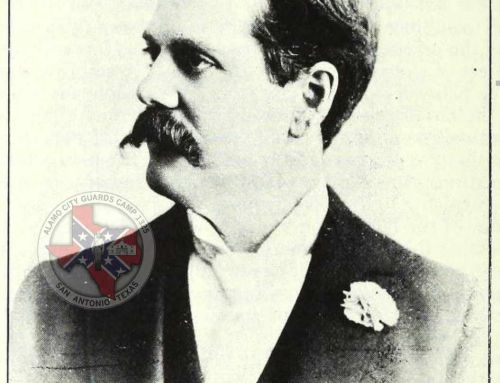by Michael C. Dorf | Dorf on Law
Today I’ll talk about a case that the Supreme Court officially released last week. A unanimous Court, in an opinion by Justice Breyer, held that because Boston permitted secular groups to fly their flags on one of the three flagpoles in front of City Hall during permitted events, it also was required to permit a Christian group to fly its flag. The decision in Shurtleff v. Boston is arguably narrow. The U.S. Court of Appeals for the First Circuit had ruled for Boston on the ground that the display of a flag on City Hall grounds is government speech, and the government as speaker has much greater leeway to choose among messages it wishes to promote than it has as regulator of private speech. The bulk of Justice Breyer’s opinion for the Court (in Part II) addresses this “basic question” of whether the government or the private group speaks by flying the flag. It concludes that the private group is the speaker.
However, that’s not all that the opinion does. It also rejects the proposition that allowing the flying of the Christian flag (on a pole that is the same height as and adjacent to the poles flying U.S. flag and the Massachusetts flag) would violate the Establishment Clause. It then quickly proceeds to rely on the Court’s free speech cases holding that government may not discriminate against religious speech to rule against the city.
In today’s essay, I take issue with Justice Breyer’s opinion in two ways: (1) The Court continues to treat government speech and private speech as though these are completely separate categories, rather than recognizing an intermediate category of mixed speech; and (2) the Court treats the federal First Amendment’s Establishment Clause as the only legitimate source of church-state separation norms, thereby continuing the repudiation of an important principle–traceable to Chief Justice Rehnquist–that there is “play in the joints” between the two Religion Clauses of the First Amendment.
The category of government speech is a relatively recent doctrinal innovation, but the basic concept is sound. The government has limited power to regulate private speech at all, and in those settings in which it may do so–for example, by imposing time, place, and manner restrictions–it must do so even-handedly. The general requirement is that government regulation must be content-neutral and especially viewpoint-neutral. By contrast, if the government is speaking on its own behalf, it can favor its own message. A government campaign urging teens not to smoke need not be accompanied by a campaign urging them to smoke. A World War II memorial honoring fallen American service members need not give equal or any space to honor those who fought for the Nazis. Etc.
Those are easy cases. The actual cases the Court has faced are more difficult, because they involve some element of government speech but also some element of private speech. These include government acceptance of donated monuments in a public park (Pleasant Grove City v. Summum), state-issued specialty license plates (Walker v. Texas Division, Sons of Confederate Veterans), and government-issued trademarks (Matal v. Tam). The score is now tied 2-2. The Court found government speech in Summum and Texas Division, SCV; it found private speech in Matal and in last week’s ruling in Shurtleff.
Are all the cases rightly decided? That’s hard to say, because the categories are artificial. It’s a bit like asking whether a particular shade of green is blue or yellow. It’s neither or perhaps both. If forced to say one or the other, I suppose one could try to draw a line, but it would be more accurate to say something like “this shade of green is a bit closer to blue than yellow.” Likewise, in all of the government speech cases, it would be better to say something like “here the private speech predominates, although there is an element of government speech as well.”
In an excellent article in the 2008 NYU Law Review, Professor Caroline Corbin proposed a category of “mixed” government/private speech in recognition of the fact that the on/off character of the Court’s then-still-emerging approach was too rigid. Alas, the Court did not accept her suggestion. Yet even if the Court will generally treat the government-versus-private speech question as binary in most cases, there are special reasons to adopt a different approach when the speech in question is religious in nature.
Imagine a case in which the private elements of speech predominate, even though the Court acknowledges that there are substantial elements of government speech. Actually, you don’t need to imagine such a case. According to Justice Breyer’s majority opinion, Shurtleff is such a case. He writes that “some evidence favors Boston, and other evidence favors Shurtleff.” Under such circumstances, it is surely possible that some number of observers will attribute the speech–a religious flag–as emanating from Boston and thus an official endorsement of Christianity.
Of the three prior government speech cases discussed above, only Summum involved religious speech, and there the Court did not need to address any issue of government endorsement of religious speech because the majority found that the municipality was engaged in government speech. So it’s worth considering how the government interest differs with respect to non-religious speech and religious speech.
In most difficult mixed speech cases, the government will have an interest in disassociating itself from certain messages. In SCV, the state of Texas didn’t want the public to mistakenly assume that the state endorsed the display of a Confederate flag. In Matal, the Patent and Trademark Office didn’t want the public to mistakenly think that the federal government approved of a racial slur (the name of a band). Those are perfectly legitimate interests. I wish the Court’s doctrine were sufficiently sensitive to weigh them, rather than simply to decide the cases by the on/off government-versus-private speech determination. But even then, and other things being equal, the government has a still greater interest in avoiding communicating to the public the mistaken impression that it endorses specifically religious views. This interest is on top of its interest in avoiding association with ideas it disapproves.
Or at least one would have reasonably thought until recently. Yes, there was much criticism of the endorsement test during last month’s oral argument in Kennedy v. Bremerton School District, but it did not come from the Democratic appointees, except to the extent that they, along with some of the Republican appointees, thought that the core issue in that case involved the risk of coercing prayer, not endorsement. At least some Justices had, I would have thought, not given up on the proposition that the Establish Clause forbids not only religious coercion but also forbids government endorsement of expressly religious speech.
Justice Breyer purports to avoid the endorsement question in Shurtleff by saying that the conclusion that Boston was not engaged in government speech eliminates any Establishment Clause issue. Yet that’s a bit of a non sequitur.
The Court’s prior cases do not equate the test for when mixed private/government speech counts as governmental speech with the test for when government has impermissibly endorsed religion. I understand that various Justices–perhaps a majority–don’t think that government endorsement of religion is at all problematic under the Establishment Clause, but I wasn’t aware that Justice Breyer (or Justices Sotomayor or Kagan) took that position.
Prior to last week’s ruling in Shurtleff, it was still possible to argue that some forms of government accommodation of private speech on public grounds could violate the Establishment Clause because they amounted to impermissible endorsement. I disagreed with their bottom line in the Bladensburg Cross Case, but concurring there, Justices Breyer and Kagan made clear that they thought the key was that given all the surrounding context, a message of endorsement was not conveyed. They left open the possibility that a private religious symbol on public ground could amount to impermissible government endorsement of religion. And Justice Sotomayor joined the dissent of Justice Ginsburg, who specifically found impermissible endorsement. One wonders what has changed.
[read full article]





